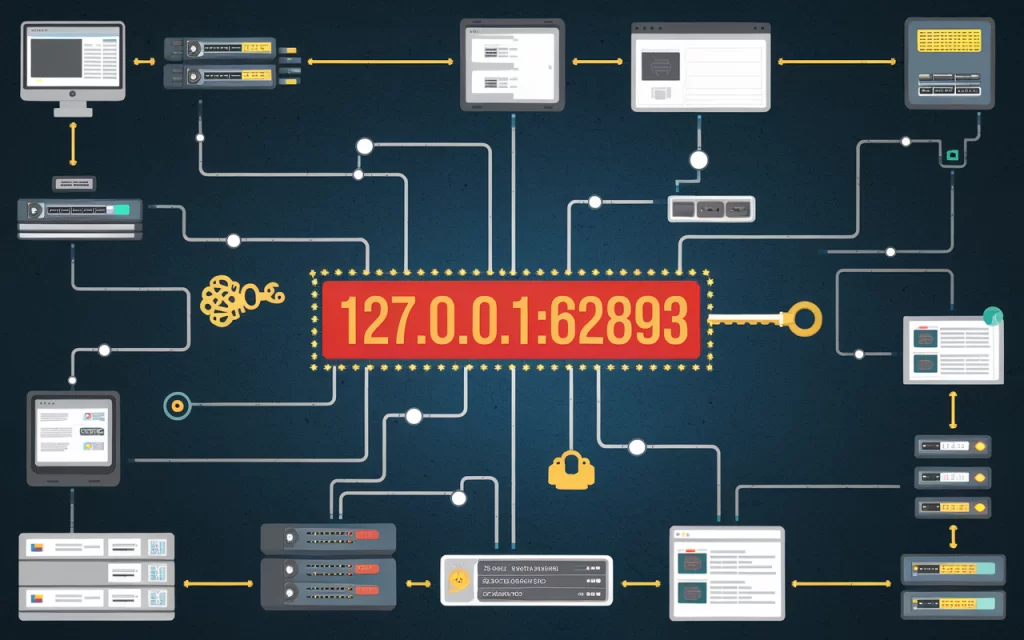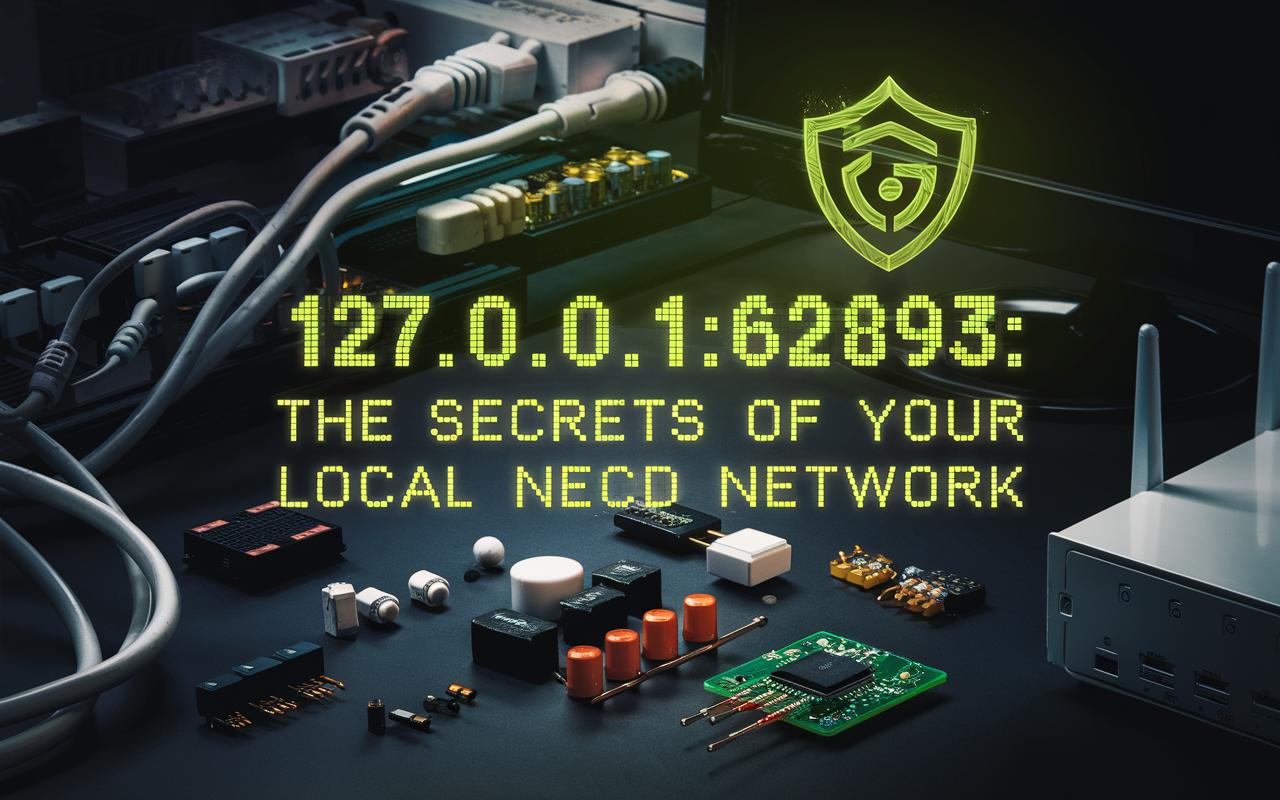The IP address 127.0.0.1 plays a fundamental role in networking by serving as the local loopback address, which allows your computer to communicate with itself. This address, often known as Localhost, is essential for testing and troubleshooting various applications and services without needing to connect to external networks.
When you pair this address with a specific port number like 62893, it creates a unique endpoint on your computer. This combination is crucial for developers and network administrators to ensure that everything operates smoothly during the development and testing phases.
By working with 127.0.0.1:62893, you can effectively simulate real-world network environments on your local machine, which is vital for identifying and resolving potential issues before they impact live systems.
127.0.0.1: Your Computer’s Internal Address
127.0.0.1 is a special IP address known as Localhost that is assigned to every computer for internal use. In networking terms, when your laptop refers to 127.0.0.1, it is essentially talking to itself.
This address allows different applications and services on your machine to communicate internally without ever reaching out to external networks.
The Internet Engineering Task Force (IETF) has reserved this address in the IPv4 standard, making it a universal tool for internal networking across all systems.
Port 62893: A Key to Network Communication

In networking, a port is like a door that allows different applications on your computer to access and share resources. A unique number identifies every port, and these ports are crucial for managing how data flows in and out of your computer.
For example, port 62893 is a specific endpoint that enables a service to run and communicate with other applications on the same machine.
Ports are identified by numbers from 0 to 65535. This port helps manage multiple network resources at the same time without conflicts.
How 127.0.0.1:62893 Operates: A Behind-the-Scenes Look
When you see 127.0.0.1:62893, you’re looking at an IP address followed by a colon and a port number. This combination indicates that a specific service on your computer is reachable and ready to communicate.
The loopback mechanism used by 127.0.0.1 ensures that any data sent to this address is immediately routed back to your machine.
This is helpful for testing, fixing problems, and developing apps without needing internet access.
Why 127.0.0.1:62893 Matters for Developers
Loopback addresses like 127.0.0.1:62893 are vital tools for developers. They allow you to test your applications and services in a controlled environment without affecting external systems.
This setup is especially important for ensuring that everything works reliably before deployment. By using 127.0.0.1:62893, you can simulate a live network on your local machine, which helps in isolating and diagnosing issues that might otherwise go unnoticed.
How 127.0.0.1:62893 is Used in Web Development

Developers and system administrators widely use the loopback address 127.0.0.1:62893 to manage and test applications on their local machines.
This address and port combination allows them to run web applications and services internally without impacting production environments.
Web developers can use 127.0.0.1:62893 to test websites. This allows them to make adjustments before publishing. They can ensure everything works correctly.
Keeping 127.0.0.1:62893 Secure on Your Local Network
Using 127.0.0.1:62893 for internal testing and development is common, but it’s important to understand the security risks that can arise if not managed properly.
Also Read: Digitalnewsalerts . Com: Your Instant News to the world
Sometimes, applications or services unintentionally expose themselves on this loopback address, which can lead to unauthorized access. Developers and administrators must know about these weaknesses and take steps to keep their systems safe.
Clearing Up Misconceptions About 127.0.0.1:62893
A common misconception is that 127.0.0.1:62893 can be used as a substitute for a real IP address in a networked environment.
The loopback address is useful for testing on your own computer. However, it cannot replace a real IP address when you want to access resources outside your computer.
The 127.0.0.1 address is designed for internal communication within your machine and is not meant for connecting to external networks.
Using 127.0.0.1:62893 in Networking Tools
In networking, the loopback address 127.0.0.1:62893 is an indispensable tool for developers and network administrators.
It’s commonly used with tools like ping, traceroute, and telnet to verify network connectivity and troubleshoot issues within the local network.
These diagnostics are crucial for ensuring that your network stack is functioning properly before deploying anything to a live environment.
Overcoming Debugging Challenges with 127.0.0.1:62893

Debugging applications using 127.0.0.1:62893 can present some unique challenges. Issues such as misconfigured ports, incorrect firewall rules, or improper application settings can lead to unexpected behaviour that makes it difficult to identify and fix problems.
To effectively debug these issues, it’s important to understand how the loopback address works and how to adjust your settings to avoid conflicts.
Dealing with these challenges requires a systematic approach to streamline the troubleshooting process. By carefully examining each potential source of error, you can improve the overall reliability of your networked applications.
This ensures that everything runs smoothly, whether you’re working in a development environment or preparing for a live deployment.
How Works in Virtualized Environments
In virtualized environments, the 127.0.0.1 loopback address plays a crucial role. Each virtual machine has its loopback interface that is mapped to the 127.0.0.1 address space.
This setup allows virtual machines to communicate internally with each other and with the host system without needing external connectivity. The use of loopback addresses is essential for managing and configuring network interfaces within these virtual setups.
In my work with virtual machines, using 127.0.0.1 for internal communication is incredibly effective. It simplifies the process of configuring networks and ensures that all systems can communicate seamlessly within their own virtualized environments.
This is especially important when running multiple virtual machines, as it allows for efficient management and prevents conflicts between different networked systems.
The Evolution of 127.0.0.1:62893 in Modern Networking
The concept of loopback addresses like 127.0.0.1:62893 has evolved significantly with the advancements in networking technology.
Originally designed to allow internal communication within a computer, these addresses have become an integral part of how modern network architectures operate.
As network infrastructures continue to expand, the role of loopback addressing has grown, ensuring compatibility and efficiency across different systems.
Closing Thoughts
The IP address 127.0.0.1:62893, also known as the Localhost address, plays a critical role in local network communications. It allows developers to test applications and services on their machines without affecting external systems. Utilizing and managing localhost addresses is essential for ensuring the reliability and security of your networked applications.
FAQs:
What is 127.0.0.1:62893?
127.0.0.1:62893 is a loopback IP address with a specific port, used to test network software on your own device without reaching external networks.
How do I find my IP address?
You can find your IP address by searching “What’s my IP” on Google or checking your network settings on your device.
What is the difference between LAN, WAN, and MAN?
LAN is a local area network, WAN is a wide area network, and MAN is a metropolitan area network, each varying in size and connectivity.




